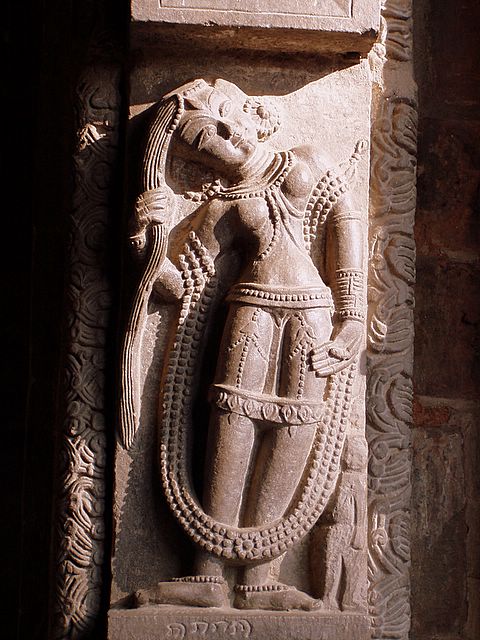
First | Previous Picture | Next Picture | Last | Thumbnails
Apsaras (Sanskrit: अप्सरा, apsarā), in Hindu and Buddhist mythology, are the female spirits of the clouds and waters.In the Rig-Veda there is one Apsara, wife of Gandharva; in the later scriptures there are many Apsaras, created by Lord Brahma, who act as the handmaidens of Indra or the celestial damsels of his court who dance before his throne.
Natya Shatra lists the following apsaras: Manjukesi, Sukesi, Misrakesi, Sulochana, Saudamini, Devadatta, Devasena, Manorama, Sudati, Sundari, Vigagdha, Vividha, Budha, Sumala, Santati, Sunanda, Sumukhi, Magadhi, Arjuni, Sarala, Kerala, Dhrti, Nanda, Supuskala, Supuspamala and Kalabha.
Apsaras are said to be able to change their shapes at will, and specially rule over the fortunes of gaming. Urvasi, Menaka, Rambha and Tilottama are the most famous among Apsaras who are well versed in the arts of music and dancing. The total number of Apsaras at Indra's court is 26, each representing a distinct aspect of the performing arts. (compare with the ancient Greek muse).
Apsaras are the wives of the Gandharvas, court servants of Indra. They danced to the music made by their husbands, usually in the various gods' palaces. In India, it is popularly believed that some of the outstanding Odissi and Bharata Natyam dancers, such as Medha Hari, are the incarnations of apsaras.
One of their duties is to guide to paradise the heroes who fall in battle, whose wives they then become. They are distinguished as daivika ("divine") or laukika ("worldly").
The Apsara was associated with fertility rites. In Hinduism, the lower Apsaras (also Vrikshakas, fairies) are sometimes referred to as nature spirits, who sometimes lured men to their deaths.
Apsaras are often depicted in Buddhist art as far afield as Cambodia and China, however. They are a common motif in the decorations of the Angkor temples.